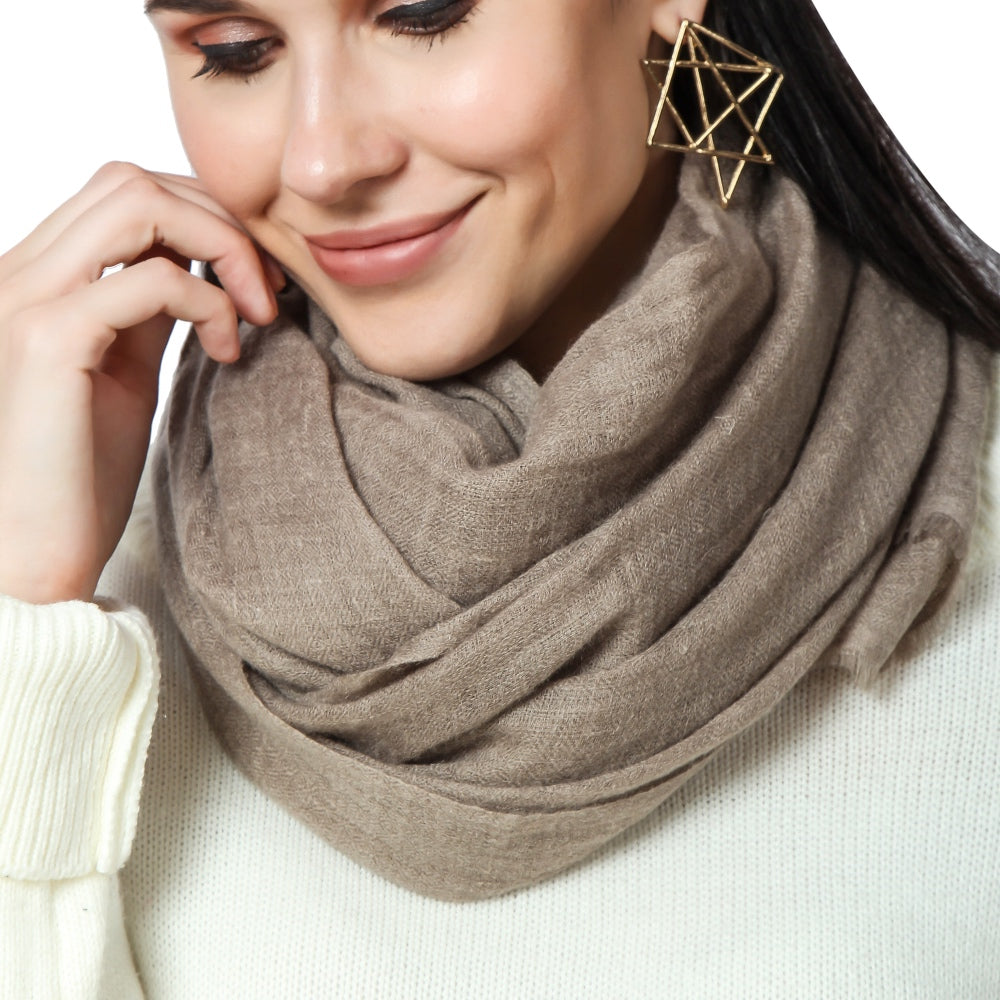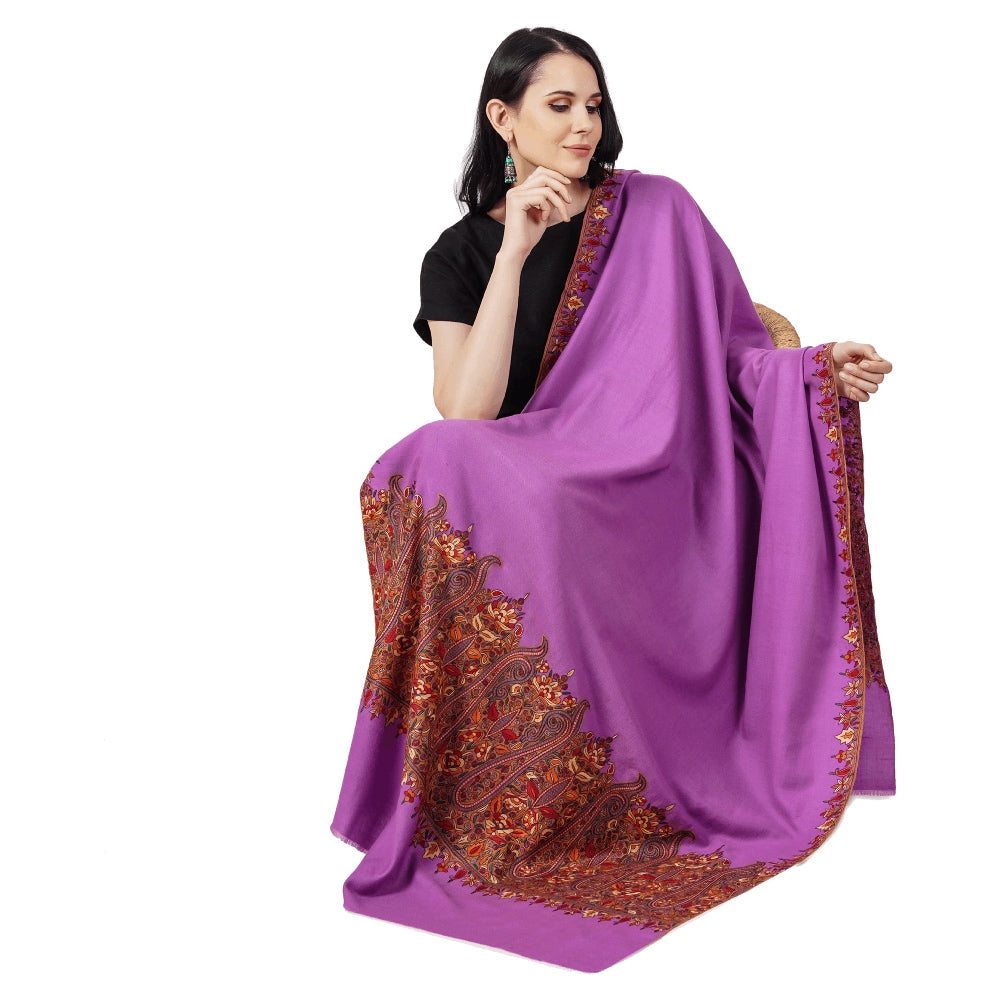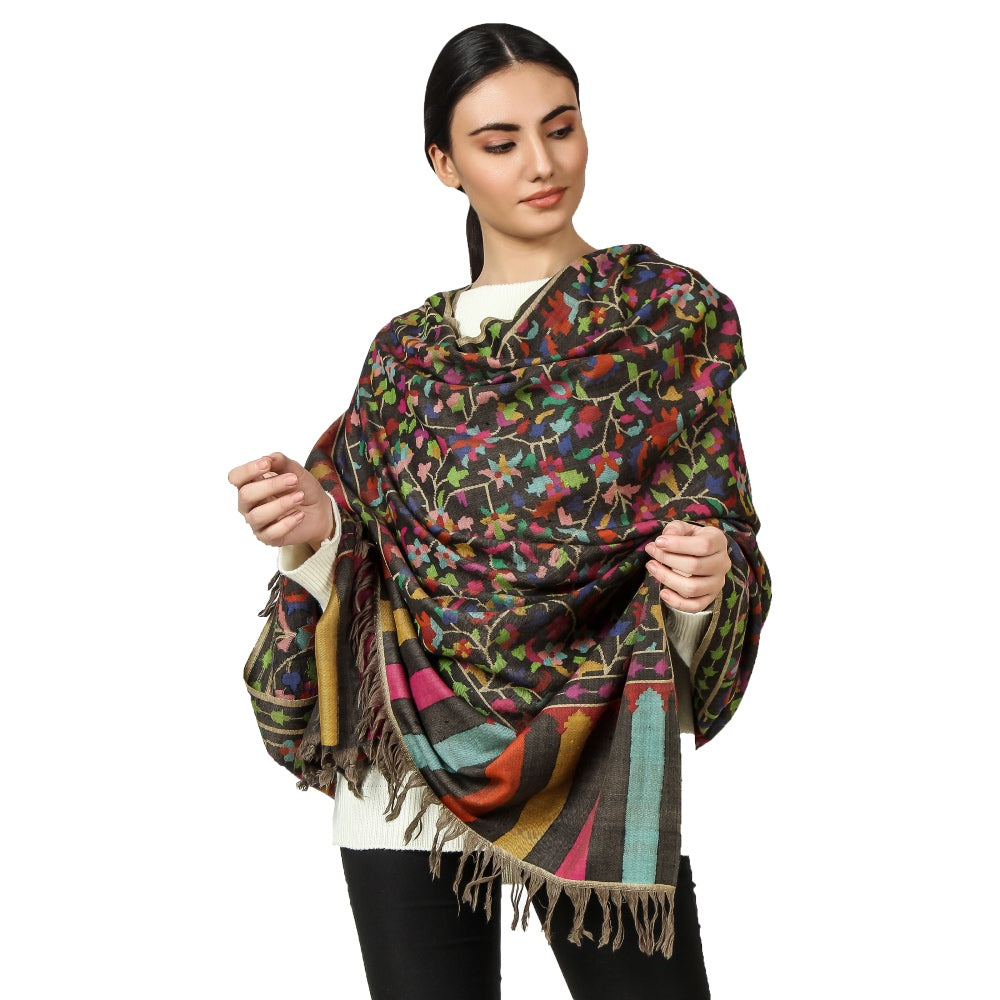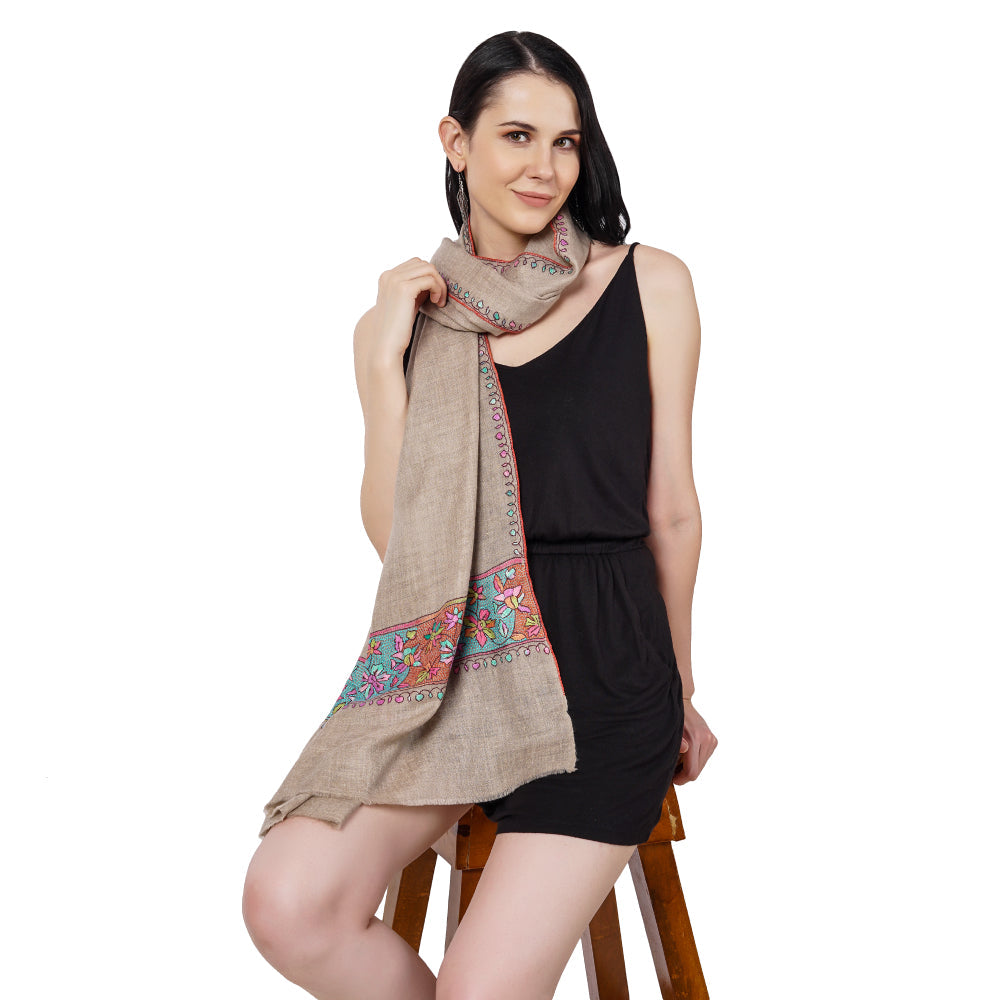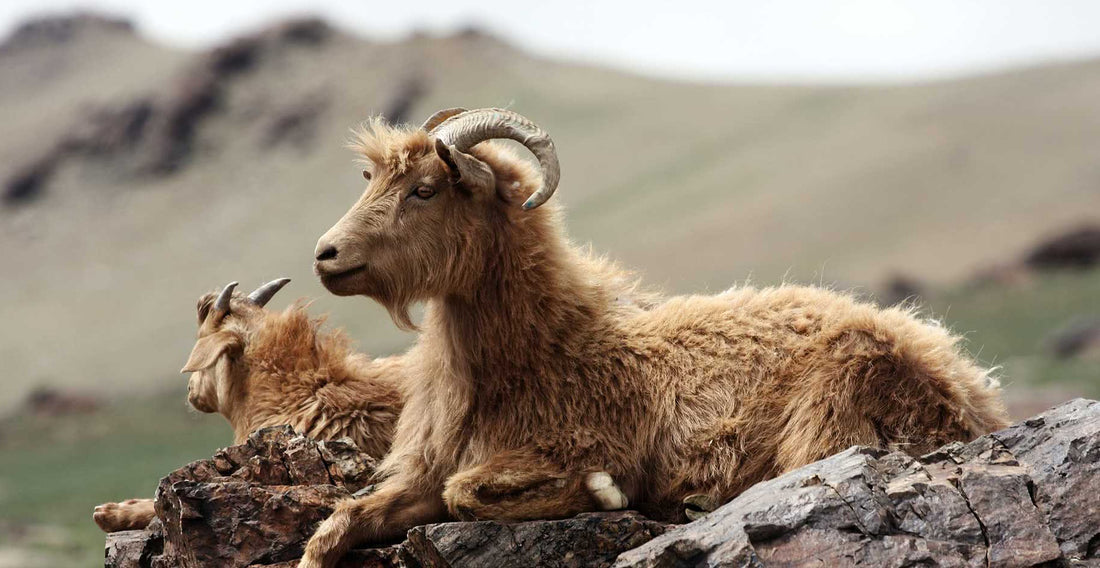
Where does Pashmina come from?
Share
Pashmina is a luxurious fabric made from the fine undercoat of the Pashmina goat's hair, which is found in the Himalayan regions of Ladakh India, Nepal, and Pakistan. Pashmina has gained popularity in the fashion industry due to its soft texture, lightweight, and versatility. It is used to make shawls, scarves, wraps, and other high-end garments. However, many people are curious about the origins of Pashmina and the process of producing this luxurious fabric. It matters because understanding the origin and production process of Pashmina is crucial for appreciating its true value and promoting its sustainable production. In this article, we will explore the history of Pashmina, the Pashmina goat, the production process of Pashmina, and its popularity around the world.

The History of Pashmina

Pashmina has a rich history that dates back to the 15th century when the Mughal emperors ruled India. The Pashmina fabric was highly valued by the royals and was considered a symbol of luxury and status. The word "Pashmina" is derived from the Persian word "Pashm," which means "wool." During the 18th and 19th centuries, Pashmina shawls became popular among Europeans, who traded them for high prices in the international market. The high demand for Pashmina continued in the 20th century, and it became a valuable commodity in the fashion industry. Today, Pashmina shawls and scarves are sought-after accessories, and many designers incorporate Pashmina into their collections. Understanding the history of Pashmina helps us appreciate its value and cultural significance, and also promotes its sustainable production for future generations to enjoy.
Also read: A Journey through time: The History of Pashmina Shawls
The Pashmina Goat
The Pashmina goat, also known as the Changthangi goat, is a breed of domestic goat found in the Himalayan regions of Ladakh India, Nepal, and Pakistan. Its soft and fine undercoat provides the raw material for Pashmina fiber, which is used to make high-end garments, such as shawls, scarves, and wraps. The Pashmina goat is an integral part of the Pashmina production process, and its role in producing this luxurious fabric is crucial.

The Pashmina goat is known for its resilience and ability to survive in harsh mountainous conditions. These goats can thrive in extreme cold, high altitudes, and scarcity of food, making them well-suited to the challenging environments of the Himalayas. The goat sheds its winter coat naturally in the spring, and this is when the Pashmina fiber is collected. Each goat produces only a few ounces of Pashmina fiber each year, making it a rare and highly valued commodity.
The characteristics of the Pashmina goat make it a unique and special breed. These goats have a small, compact body, and their coats are a mix of coarse outer hair and soft, fine undercoat. The Pashmina fiber is collected from the undercoat, which is only a few microns in diameter, making it incredibly fine and delicate. The fiber is also incredibly warm and lightweight, making it a perfect material for winter clothing.
The habitat of the Pashmina goat is primarily in the high-altitude regions of the Himalayas, where the weather conditions are favorable for their survival. However, overgrazing and habitat destruction have led to a decline in the Pashmina goat population in recent years. It is essential to promote sustainable breeding and care practices to ensure the longevity of this unique species.
The Pashmina goat plays a vital role in producing Pashmina fiber, which is a luxurious and highly valued material in the fashion industry. Understanding the characteristics and habitat of the Pashmina goat is crucial for promoting its sustainable production and ensuring the preservation of this unique species.
Also read: Which goat breed produces Pashmina?
The Production Process of Pashmina
The production process of Pashmina fiber involves several intricate steps, beginning with the collection of the goat's fine undercoat. After the Pashmina goat sheds its winter coat naturally in the spring, the fibers are collected by combing the goat's hair with a special comb. This process is known as "dehairing," where the coarse outer hair is separated from the fine undercoat. The fine undercoat is then cleaned and washed with water to remove any impurities.

The next step is carding, where the fibers are straightened and aligned to create a continuous thread. This is done by combing the fibers with a carding machine, which creates a uniform texture and thickness. The fibers are then spun into yarn using a spindle or a spinning wheel.
After the yarn is spun, it is then woven into fabric using traditional handloom techniques. The process of weaving Pashmina fabric is labor-intensive and requires a high level of skill and expertise. The weaving process can take several weeks or even months, depending on the complexity of the design.
The challenges and complexities of the Pashmina production process include the limited availability of the Pashmina goat and the low yield of Pashmina fiber per goat. Each goat produces only a few ounces of Pashmina fiber per year, making it a scarce commodity. The intricate dehairing and weaving process also require a significant amount of time and expertise, adding to the overall cost of production.
In addition, the rise of cheap imitations has posed a threat to the Pashmina industry, leading to the need for stricter regulations and authentication processes. Despite these challenges, the production of Pashmina remains a highly valued and sought-after process, and the quality and beauty of the final product make it worth the time and effort put into the production process.
Also read: The making of Pashmina Shawl
Pashmina Around the World
Pashmina is a highly sought-after material around the world, renowned for its luxurious softness, warmth, and beauty. Its versatility has made it a popular choice for a wide range of products, including shawls, scarves, wraps, blankets, and even home decor items such as pillows and throws. Pashmina has become a staple in high-end fashion, with designers and retailers using the material in their collections to create unique and elegant pieces.

Pashmina is primarily produced and exported from countries such as India, Nepal, and Pakistan, where the Pashmina goat is native to the Himalayan region. These countries have a long history of producing and weaving Pashmina fabric, with many skilled artisans and weavers passing down traditional techniques from generation to generation.
However, the global demand for Pashmina has led to the expansion of production and exportation to other countries such as China, Mongolia, and Iran. These countries have also developed their own techniques and styles of Pashmina production, adding to the diversity and beauty of the final product.
Pashmina has become a symbol of luxury and sophistication, worn by celebrities, royalty, and fashion enthusiasts around the world. Its softness, warmth, and elegance make it a popular choice for special occasions, such as weddings and formal events. The versatility of Pashmina also makes it a great gift item, with many people purchasing Pashmina products as souvenirs or presents for loved ones.
The global demand for Pashmina continues to grow, with many countries producing and exporting this luxurious material. The versatility and beauty of Pashmina make it a popular choice for a wide range of products, and its popularity in high-end fashion has solidified its place as a symbol of luxury and elegance.
Also read: The ultimate guide to Pashmina Shawls and Cashmere Scarves
Conclusion
In conclusion, Pashmina is a luxurious and highly valued material that has captured the attention of the fashion industry and consumers around the world. We have discussed the history and origin of Pashmina, including the role of the Pashmina goat in producing the fine undercoat used to make Pashmina fiber. We have also explored the intricate and labor-intensive production process of Pashmina, highlighting the challenges and complexities involved.
It is important to appreciate the origin and production process of Pashmina, as it not only allows us to fully understand and appreciate the value of the material, but also supports the sustainable and ethical production of Pashmina. By purchasing authentic Pashmina products from reputable sources, we can ensure that the production process is environmentally friendly and socially responsible.
As consumers, we have the power to support sustainable practices and encourage the preservation of traditional techniques and skills involved in the production of Pashmina. By doing so, we can contribute to the conservation of the Pashmina goat and the communities that rely on its production for their livelihoods.
In conclusion, let us appreciate and support the sustainable production of Pashmina, not only for its beauty and luxury, but also for its cultural significance and the livelihoods of those involved in its production.

